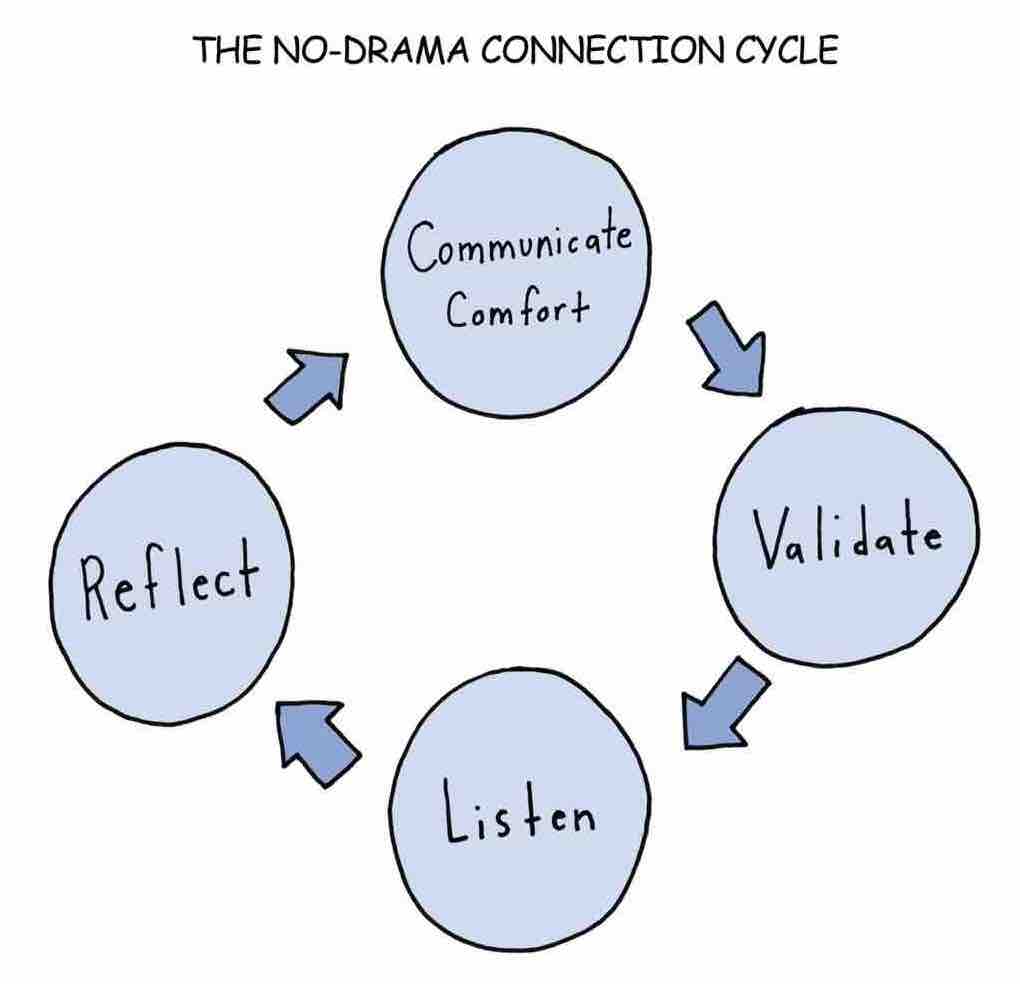via Eric Barker
When kids behave, things are easy. The problem is when you need to discipline them. Most parents know which methods they don’t want to use to correct their children, but aren’t as sure which methods they should use.
So what is discipline? The word comes from the Latin “disciplina” — which means “to teach.” And, in the end, that’s what we need more of. Every time a kid misbehaves it’s an opportunity to teach them valuable skills like empathy, self-control, problem-solving, and dealing with emotions.
Merely punishing kids might stop bad behavior in the short-term but without a lesson, all it teaches them is that whomever has more power gets to enforce their arbitrary rules. (Hint: this does not bode well for their future relationships.)
Yes, you want them to stop painting the toilet purple but you also want them to learn to consider the feelings of others, and build other long-term skills that will help them lead successful, happy lives. And you want them to feel closer to you after a dispute, not further away.
From No-Drama Discipline:
The research is really clear on this point. Kids who achieve the best outcomes in life—emotionally, relationally, and even educationally—have parents who raise them with a high degree of connection and nurturing, while also communicating and maintaining clear limits and high expectations. Their parents remain consistent while still interacting with them in a way that communicates love, respect, and compassion. As a result, the kids are happier, do better in school, get into less trouble, and enjoy more meaningful relationships.
So how the heck do you do all this? (No, a taser is not involved.)
You want to “connect and redirect.” This is the system recommended by Daniel Siegel, clinical professor of psychiatry at the UCLA School of Medicine, and Tara Payne Bryson, a pediatric and adolescent psychotherapist.
They are the New York Times bestselling authors of No-Drama Discipline: The Whole-Brain Way to Calm the Chaos and Nurture Your Child’s Developing Mind.
Okay, let’s get to it…
1) Connect
If your kid is in mid-yell or mid-cry, they cannot hear what you are saying. Reread that. Get it tattooed on your body. How logical are you when you’re overwhelmed by emotion? And you expect a kid to be any different?
So immediately doling out punishments will rarely be processed and just escalate an already bad situation. You need to connect.
Connection means showing that you’re on their side – while still maintaining boundaries. You need to tune into their feelings and show them that you understand. This helps move them from reactivity to receptivity. It allows the emotion to dissipate so they can start using their thinky brain instead of their emotional brain. Connection has 4 parts:

Communicate Comfort
They cry, you yell and things get worse, not better. Sound familiar? Because it’s now a fight for power instead of a conversation. As NYPD hostage negotiators know, “behavior is contagious.” If you want to be in a fight, by all means, give an angry look, raise your voice and wag your index finger. If you want this to be a somewhat sane interaction, act like it is one. Communicate comfort. Make them feel safe.
Validate
How do you react when someone dismisses your feelings and tells you “stop making a big deal out of this and just calm down”? Exactly. So don’t expect a child to be any better at it. Validate their feelings — though not all their actions. They need to feel understood in order to calm down. Until the big emotions are out of their way, logic is powerless.
Listen
Your child is really angry about something. You know what always works? A really long lecture. Going on a rant to someone screaming at the top of their lungs is incredibly effective in showing them the error of their ways and getting them to calm down. No child would ever respond by tuning you out. And make sure to repeat the same points over and over. People love this, especially surly teenagers…
Um, no. They won’t process a thing until they get to talk about how they feel and you show them you understand. So listen.
Reflect
When they tell you how they feel, repeat it back to them. You want to show, not tell. If you say, “I know how you feel” they’ll reply, “No, you don’t!” If you say, “It really upset you that I wouldn’t let you build a nuclear reactor in the basement” they’ll say, “Exactly.”
After you communicate comfort, validate feelings, listen and reflect, ask yourself one question: “Are they ready to hear, learn, and understand?” If not, repeat the steps.
Whoops, actually there’s a second question to ask yourself: “Am I ready?” Because if you’re overly emotional this will not go well. They need to be calm — but so do you.
(To learn more about how you and your children can lead a successful life, check out my bestselling book here.)
Okay, so you’ve connected. Now it’s time to “redirect.” That’s an acronym because 8 more steps is a lot to remember, especially after junior decides to give the living room wall an unapproved mural. So let’s start with “R”…
… keep reading the full & original article HERE
No comments:
Post a Comment